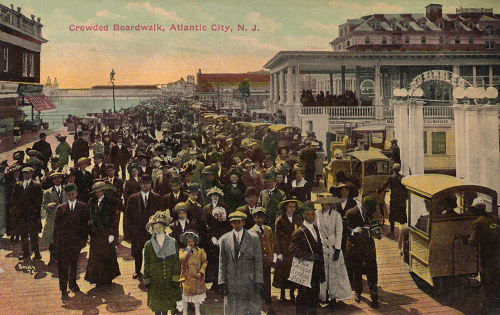In my last post I talked about the big myth that’s holding most creatives back from a successful independent career. To recap:
Success is not some cruel lottery in which you might or might not luck out. The freedom of lifestyle that you’re looking for is not achieved by talent, effort or chance alone; there are a few new skills and distinctions to be learnt, and newsflash: they’re not rocket science.
Trust me; you may feel like a pretty small acorn right now. You may feel wary of what lies in store if you were to really throw your heart into this. You may be wondering where the guarantee is that it will be worth it… but you know what grows from acorns. Think about that for a moment!
Dame Vivienne Westwood, British Fashion Designer of the Year 1990, 1991 and 2006 and one of the architects of the punk fashion phenomenon of the 1970s, was once just a girl who didn’t fit in among the rural hills of Derbyshire. “I didn’t know how a working-class girl like me could possibly make a living in the art world,” she recalls. In her young adulthood she worked as a primary school teacher while making and selling jewellery on the Portobello Road… and then made some clothes for Malcolm McLaren’s edgy new store… and she kept getting wiser still, and she made it work. Fast forward sixty years, and the body of work she has been responsible for is breathtaking, extending directly from a self-taught love of 17th and 18th century cutting techniques, traditional tailoring and corsetry. Her brand is now said to be worth a seven figure sum, and her influence on fashion is legendary. [Wikipedia]
I know what you’re thinking; you may not want to go quite that stratospheric. You just want to make a living, for Pete’s sake! And you can do that; there is no reason why you cannot have a small, manageable business that pays your way and gives you freedom to spend your days being creative. I use Dame Viv’s example simply to demonstrate that there is no limit to what is possible – yes, even in the arts! Even from sewing!
So let’s get down to, er, business. What does it really take to make a small, creative business pay the bills? Here are the answers to some more of your questions.
Your Dream
“How do you get from idea to actual business without wasting time on things that don’t matter? I have had ideas in the past, but I’m never able to get anything off the ground because I get overwhelmed by all the details involved.”
“How can I know that things are truly working – or not working?”
Trying to get a solid business together and make it work can feel like stumbling around in the dark. How do you know you’re on the right track? How do you know whether a fledgling project is worth continuing with until it takes off (especially if it’s been a fledgling for a long time)? How do you know that it’ll continue to be fun, and how do you know when it’s time to change something, or cut your losses and get out?
In order to know the answers to all these questions, you need to know what you’re setting out to accomplish in the first place. You need to have a vision that’s a lot more specific than “a successful business”. You need to know very clearly what you want to be doing each day and what you want to be earning from it. Only when you have that destination in mind can you confidently pick a route to get there – and know whether you’re getting closer to it or not.
Bonus: With a clear destination, you may find that there are shorter, simpler, or more effective routes to your destination that you hadn’t thought of. Ask me how I know.
Only when you have a compelling vision can you find the motivation to get up in the morning and keep driving forward until you get there. Be clear on exactly where you want to go, and you’ll be able to go there. No more drifting.
Your Mission
“How do I differentiate my brand?”
“How do you align the “bricks and mortar” of running a business (permits, taxes, shameless self-promotion, billing clients, setting prices) with who you really are, the person with creativity, values, human imperfections, etc.?”
“How do I ensure sustainability and survival in a competitive market?”
It’s true: there are an awful lot of people doing things that are very similar to what you do. You may even wonder whether there are enough customers out there to support you – and all of your competitiors too. How do you stand out?
The answer is to discover your big “why”. Every great business has a grand purpose that sets it apart. Dame Vivienne again: “I was messianic about punk, seeing if one could put a spoke in the system in some way.” Some of you know Autumn Adamme of Dark Garden Corsetry, who is “supporting uncommon beauty, one waist at a time.” When you don’t just make stuff and sell it, but you want to change the world, people dig that and follow you in droves, because you stand for something they can get behind. Even better: let the business be a secondary concern that funds your grand purpose in the world: this is where dream and mission synthesise and become one.
Communicate what you believe in and build a following around that. Do you think that plus size women get a raw deal? Do you think that costumers ought to be able to wear more accurate historical shoes? Make it happen. In a crowded, competitive world, true success is about more than exchanging goods for money. Don’t start a business; start a revolution.
Your Tribe
“How do you find serious clients who are truly interested in actually paying for your work?”
“How would I know/research whether or not there’s a market for my product?”
“How do I market my product/service when I’m an introvert and have no travel budget for craft fairs or maker shows?”
This is the biggie – there were more questions about finding customers than anything else in the survey. Where do you find customers who will pay? How do you get people to sit up and take notice?
Here is the huge mistake that most creative business owners make. You’ve got it backwards. Your business is not about you and what you do; it’s about your customers and what they need. You will always struggle to find customers when you start with yourself. The trick is to find a crowd of people with a need or a problem that your skills can help with, and then use your skills to solve that problem or meet that need.
This is not about selling out. The trick is to meet them half way: find a big enough crowd with a problem that your skills can help with, and ensure it’s a problem that you will enjoy working to solve.
The tribe you build and the problem that you solve will have a lot to do with the mission that you identified above. You may have an unusual combination of skills and experiences that make you an ideal fixer of this problem (there’s a reason that I opened my magazines with corset drafting tutorials – people tear their hair out over corset patterns, and I’m a costume maker with training as a high school Mathematics teacher). It may be that you are the best at understanding the problem (“OMG, she gets me.”) It may be that your skills are not the unique factor at all, but that you are simply the one who cared enough to be willing to do the legwork to figure it out on behalf of everyone.
Focus on a target customer who connects with your mission, and assess how you can use your skills to improve their day. When you aim to serve, instead of aiming to get customers who’ll pay you to do your hobby, they’ll connect with you and your business. Put the focus on them, not you.
In Summary
Get your Dream clear, your Mission defined, and put your Tribe first, and you’ll be well on your way to the freedom you’ve been looking for – we’ll add elements four and five next time. Has this post helped you see your business differently? Comment below and let me know! [NB: comments are now fixed!]







The first post resonated with me, I’ve been that poor fly for a long, long time and it’s… frustrating… to say the least.
One of my greatest frustrations is figuring out where to start- and it encompasses all of the questions you’ve answered here (and a few more, besides.)
Thank you for taking the time to do this!
Cathy, you walk your talk! This is clearly evidenced by the content here-above. For my part, I am a hungry customer/creative whom you have served – and continue to serve eloquently and valiantly on an almost daily basis at present. For that I thank you!